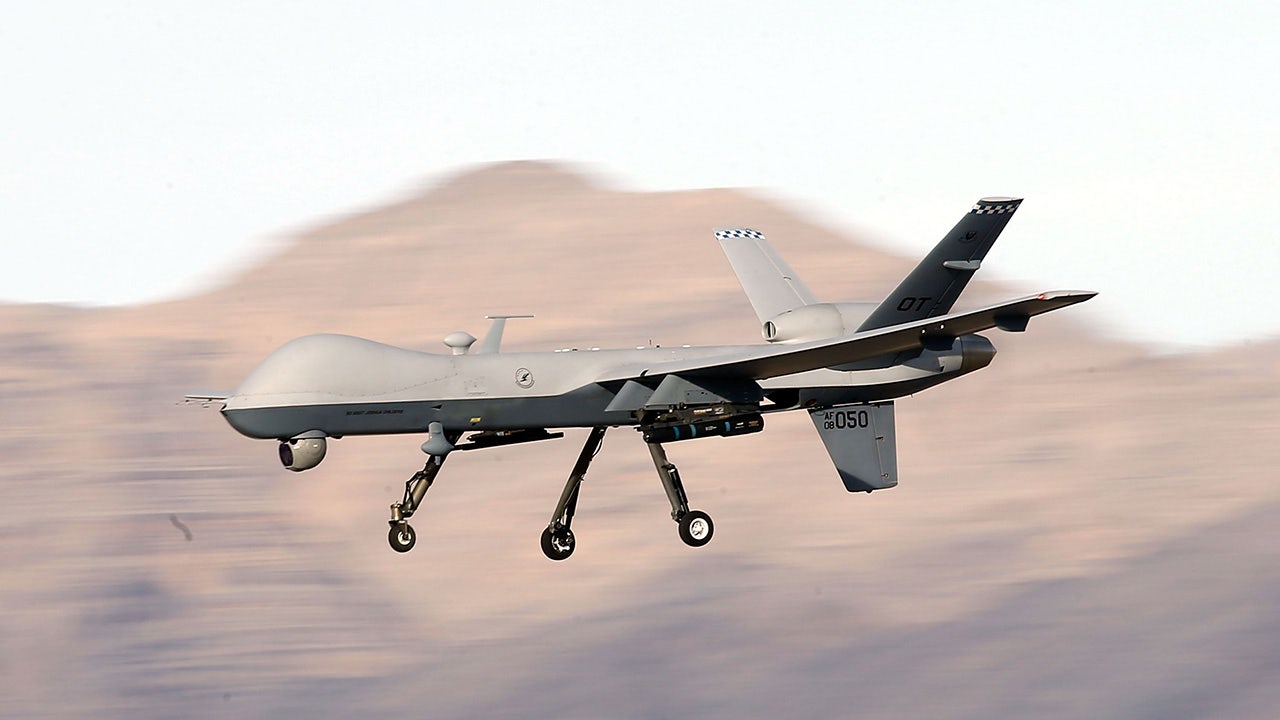United States
CIA uses drones to sniff out cartels and fentanyl labs in Mexico: US official

The Central Intelligence Agency (CIA) has been conducting surveillance flights over Mexico using unarmed MQ-9 Reaper drones as part of a partnership with the Mexican government to combat drug cartels and fentanyl production. Authorized by the Biden administration, this program, which was initially initiated under the Trump administration, focuses on gathering intelligence to locate and disrupt fentanyl laboratories and cartel operations. The drones are not armed, emphasizing that this is a collaborative effort rather than a unilateral military operation. A senior U.S. official clarified that this operation differs from past U.S. drone programs in countries like Pakistan, stating, “This is not the Pakistan model. It is being done in partnership with the Mexican government.” The intelligence collected through these flights is shared with Mexican authorities, who are then responsible for taking action to shut down illegal activities linked to cartels and fentanyl production.
The partnership underscores the shared challenge both countries face in addressing the production and smuggling of synthetic drugs like fentanyl and methamphetamine. Felipe de Jesus Gallo, the head of Mexico’s Criminal Investigation Agency, has acknowledged Mexico’s role in the production of these drugs, stating, “Mexico has been the champion of methamphetamine production, and now fentanyl.” Speaking at a U.S.-Mexico conference on synthetic drugs in Mexico City, Gallo highlighted the industrial-scale production of methamphetamine and fentanyl in Mexico, which has become a major global supplier of these drugs. Mexican cartels have been using precursor chemicals imported from China and India to manufacture fentanyl, a synthetic opioid that has caused approximately 70,000 overdose deaths annually in the United States. While fentanyl abuse is not widespread in Mexico, methamphetamine addiction is a significant issue in the country.
The production of methamphetamine in Mexico has evolved from small, makeshift labs in remote areas to large-scale industrial operations. According to Gallo, meth production has become so sophisticated that it is no longer confined to traditional regions like the mountains of Sinaloa and Sonora. Labs are now being discovered in states such as Hidalgo, Puebla, and Jalisco, indicating the expanding reach of cartel operations. These industrial-scale labs are equipped to produce massive quantities of meth, which are then exported not only to the United States but also to countries as far away as Hong Kong and Australia. The cartels have also developed methods to launder their profits and avoid detection, further complicating efforts to disrupt their operations.
Fentanyl production, while equally concerning, operates on a smaller scale due to the drug’s potency. Despite this, the sheer volume of fentanyl being produced in Mexico remains alarming. In 2023, Mexican soldiers seized over half a million fentanyl pills in Culiacan, Sinaloa, along with 282 pounds of powdered fentanyl and 220 pounds of suspected methamphetamine. This operation was described as the largest synthetic drug lab discovered to date, highlighting the scale of fentanyl production in the region. The labs, often hidden in rural areas, are typically camouflaged with tree branches and tarpaulins to avoid detection. However, the increasing sophistication of cartel operations has made it harder for authorities to track and dismantle these facilities.
The collaboration between the U.S. and Mexico to address the fentanyl crisis is critical, given the devastating impact of the drug on communities in the United States. The Mexican government has taken steps to crack down on cartel operations, including seizing large quantities of fentanyl and shutting down production labs. However, the cartels’ ability to adapt and expand their operations poses a significant challenge for law enforcement. The use of precursor chemicals from China and India, which are often imported legally but then diverted for illegal use, has further complicated efforts to curb fentanyl production. Experts agree that addressing the root causes of the fentanyl crisis will require a multi-faceted approach, including stronger international cooperation and efforts to disrupt the supply chain.
In summary, the U.S. and Mexico are working together to combat the production and smuggling of synthetic drugs like fentanyl and methamphetamine, with the CIA’s drone surveillance program playing a key role in this effort. The industrial-scale production of these drugs in Mexico underscores the severity of the problem and the need for continued collaboration between the two nations. While significant progress has been made in disrupting cartel operations, the adaptability and reach of these criminal organizations highlight the ongoing challenges in this fight. The partnership between the U.S. and Mexico serves as a model for international cooperation in addressing shared threats, but the complexity of the issue demands sustained effort and innovation to achieve lasting results.


















